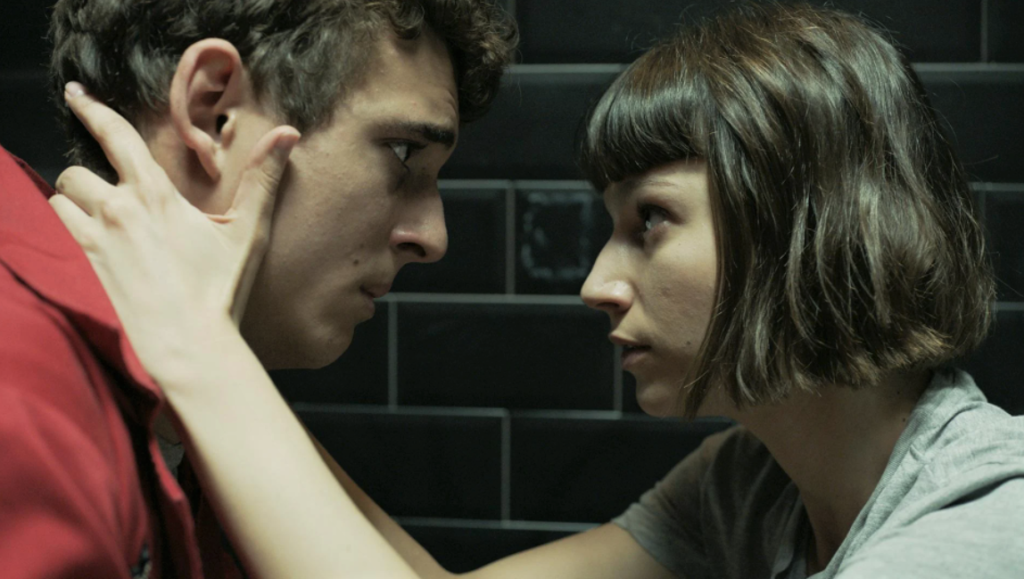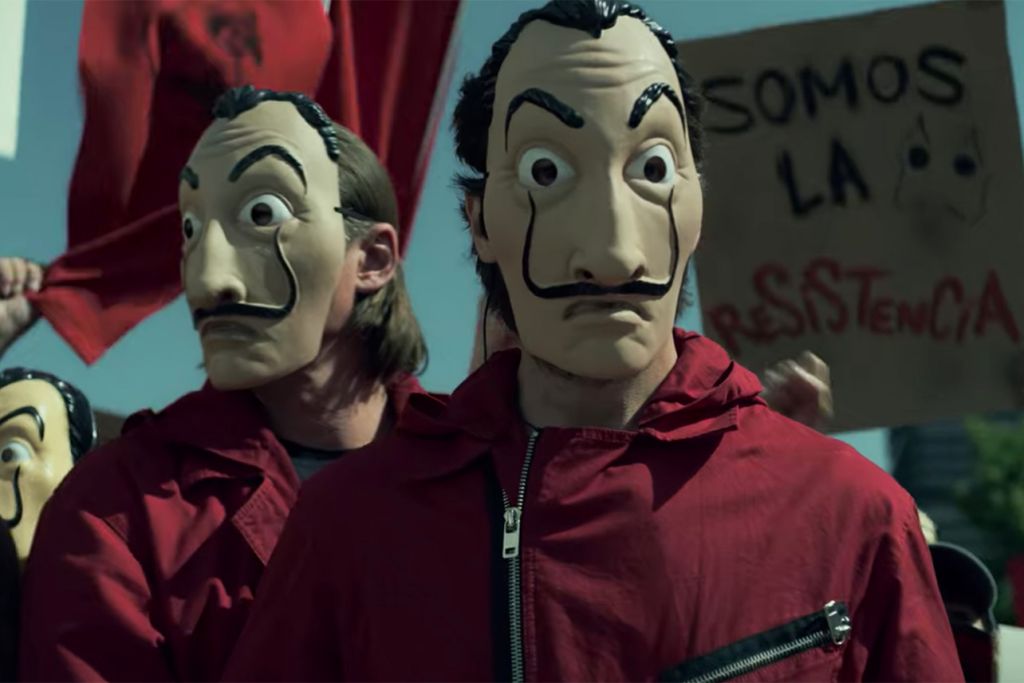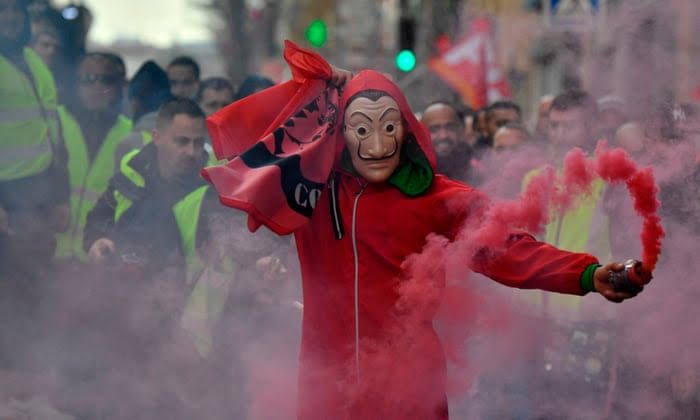Spanish crime drama Là Casa De Papel, a.k.a. Money Heist, premiered its first season on Netflix in December 2017, and the show immediately gained widespread popularity. The producer, Àlex Pina, created the series with two long-planned heists centred on the Royal Mint of Spain and the Bank of Spain over five seasons. Besides winning numerous awards for its attempts to redefine Spanish television, the series also won the 46th International Emmy Award for Best Drama Series.
I have thoroughly enjoyed every episode of Money Heist. Now, with the series concluding its final season this December, it prompted me to reflect on its tangled plotline, the interpersonal drama between the characters, the narration, the direction, the costumes, and the political ideologies behind it.
STORYLINE & CHARACTERS
In the first two seasons, a criminal mastermind, The Professor, portrayed by Álvaro Morte, plans the biggest heist in history over five months of seclusion. He intends to infiltrate the Royal Mint of Spain and print €2.4 billion in less than eleven days. The Professor recruits eight people to execute his plan who possess specific skills and have nothing to lose. This group of misfits breaks into the Royal Mint to hold sixty-seven hostages, only to learn whether their suicide wager will succeed. As they want to maintain a positive public reputation, they do not plan to harm any hostages. And, with the mastermind working on the outside, they always manage to stay one step ahead of the police.
The sequel to Season Three takes place two to three years after the Royal Mint heist. The Professor picks up the impossible old plan of his elder brother, Berlin, an attempt to assault the gold vault at the Bank of Spain and extract ninety tons of gold worth €3.9 billion. Once again, the disguised robbers sneak into the heavily guarded bank. They take hostages and eventually gain access to the gold and state secrets by the end of the fifth season.

When the creator, Àlex Pina, walked into a meeting room wearing a T-shirt that read Tokyo, Jesus Colmenar, the director of the series, decided it would make the perfect name for the lead character, which ultimately led them to the rest of the character names. And as the show progresses, more characters are introduced with different city names. The unrecognised Spanish actors who starred in Money Heist gained excessive popularity due to their outstanding performances and the fascinating relationship they formed with the audience.
With modern romance between Tokyo and Rio, the laughter and innocence of Denver, the fan favourite and the forgery expert, Nairobi, the egotistical narcissist Berlin, and of course, the Professor, who has a keen sense of reading people even though he seems like an introvert who prefers the shadows over the spotlight. Raquel, the police negotiator, and Monica, the pregnant hostage who later joins the robbers, play crucial roles in the second half of the series.
The narrative unfolds from the perspective of one of the robbers, Tokyo, in a cinematic style that relies on flashbacks, time jumps, hidden character motivations, etc. Amidst the heists, the suspenseful plot unfolds new mysteries with several twists that tackle key social agendas of our time, such as homophobia, political differences, racism, sexual abuse, etc.





POLITICAL IDEOLOGIES OF MONEY HEIST
Around the world, protests have become increasingly recurrent, from Hong Kong and Iran to the USA and the EU. As protests continue to escalate, many more web shows have become symbols in the political world. Similarly, the fictional series Money Heist influenced Global Resistance. They have left a lasting impression on the illusions of capitalism as they oppose the existing economic system.
In Money Heist, the robbers directly take money from the government by breaking into and creating billions of euros in the Royal Mint to gain financial freedom. As the Professor tells Raquel in Season Two, the government has repeatedly poofed money into the hands of the rich during economic crises while the working class suffered. Despite corruption, the government was not called thieves or punished, so he decided to do the same.
He says, and I quote – “In 2011, the European Central Bank made 171 billion euros out of thin air. Just like we are doing, only bigger. They made 185 billion euros in 2012 and 145 billion euros in 2013. Do you know where all that money went? To the banks. Directly from the factory to the pockets of the rich. Did anyone call the European Central Bank a thief? No. They called it Liquidity Injections. And they pulled it out of nowhere, Raquel. Out of nowhere. I am making Liquidity Injections here, but not for the bankers. I am doing it here in the real economy.”
The series reveals that the robbers are modern-day reincarnations of Italian anti-fascists. The Italian anti-fascist song, Bella Ciao, originating from World War II, plays multiple times throughout the series. Bella Ciao is a battle cry for freedom. The song has recently gained popularity through the show, not just in Europe but worldwide. Today, it is used widely as a symbol of Resistance, Indignation, and Scepticism towards the system that is the central theme in the series, as the Professor says in Season Three.
Following the success of the first heist in Season Two, one of the robbers was captured on the tropical island and sent overseas to be tortured instead of returning to face trial in Spain. The idea of the robbers as the Resistance becomes more blatant by Season Three. The Professor declares war against the system. And unlike the first two seasons, where there are good guys within the police, in Season Three, the police act as vile torturers; for example, César Gandia, the head of security at the Bank of Spain, is a frighteningly racist character.


In disguise as robbers, the public supports the robbery gang throughout the series. The bandits flood Madrid by raining down over 100 million euros from a blimp to increase their popularity further. The Professor remarks with pride that the Salvador Dalí mask, which the robbers wore during the heists, has become a symbol of Resistance in different countries. Its actions have led to demonstrations against corruption in Brazil and marches for equal gender rights in many countries. In addition, it shows their supporters have filled stadiums in France and Saudi Arabia, as well as protesters waving flags of Antifa at the G-20 summit in Hamburg.
With that said, Money Heist realistically demonstrates citizen resistance. By seeking the same financial freedom as the rich, they send a powerful message to the public that corruption is unacceptable, which is inspirational to consider. Ideally, people would love to see an uprising overthrow corrupt governments, but that is unlikely.
The battle for change has been slow through advocacy and protests. Laws and policies are sometimes changed but seldom enforced or looped around. Therefore, the events of “Resistance” are essential for inspiring citizens to participate in social reforms.
UNIFORM OR COSTUME SYMBOLISM
Money Heist has changed locations throughout its five seasons, from the Royal Mint to the Bank of Spain. The characters have come and gone, but one thing has remained constant – the costumes worn by the robbers. Two distinctive characteristics of the uniform of the anti-fascist bandits are their Dalí masks and Red Jumpsuits. Considering the Professor emphasises camaraderie throughout the series, perhaps it is no surprise that the uniforms do more than conceal their identities from the police and hostages. It gives them power! Furthermore, the outfit serves as a physical symbol of the series’ theme, i.e., Resistance, Indignation, and Scepticism.
Red Jumpsuits symbolise the desire for reform from the working class!!
The robbery gang wears red, not charcoal or olive green, for a reason. Historically, this colour has been representative of Socialism and metaphorically reflects the struggle and blood involved. After several revolutions, from France in the 1700s and Cuba in the 1950s, the red signified new liberties and freedoms. Red can also symbolise romantic love and passion, besides anger, danger, and violence. And, when anger blends with passion, red becomes a symbol of protest. Additionally, jumpsuits are typically associated with the working class. So, a red jumpsuit conveys the protestors as victims of corruption and their solidarity with each other.

The Dalí Masks carry anti-capitalist sentiments!!
The Dalí masks honour Salvador Dalí, a Spanish artist who rejected modern capitalist society. When the famed Spanish artist was alive, he exhibited heavily during the Dada movement in Zurich, which opposed the modern capitalist society. Apart from wanting to get rich, the robbers in the show upend the capitalist system by distributing their stolen wealth. In a way, the philosophies of Dalí align with the values in La Casa de Papel, Money Heist.
To summarise, dramatic execution made the show entertaining for the audience. Several protests have erupted over the plot and symbolism of the series. However, in an era in which systems and cultures are increasingly under attack, Money Heist reflects the collective consciousness of the public, which is why it resonates with the audience.

